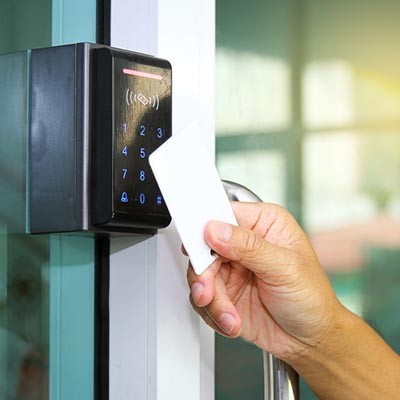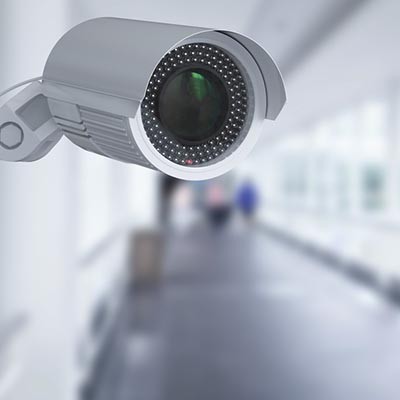NetWorthy Systems Blog
Data security isn’t the easiest thing in the world to plan for, especially if your organization doesn’t have any dedicated security professionals on-hand. While protecting your data with traditional methods, like passwords, firewalls, and antivirus, is important, what measures are you taking to make sure a thief or hacker isn’t just walking into your office and making off with your technology?
Chances are you have a Google account, whether it’s for business or personal use. It’s more accessible today than ever before and provides a solid way to gain access to several important features and accounts. Considering how much can be done with a Google account, users forget that they can put their security and personal data at risk. Here are some ways that your Google account is at risk, as well as what you can do to fix it.
Scammers find the holidays to be a wonderful time for stealing from unsuspecting victims. They know that the gift-giving season inspires others to spend a lot of money, which means that sensitive information, like credit card numbers, is up for grabs in bulk. As a consumer yourself, you’ll have to keep an eye out for these scams to make sure that you’re staying as safe as possible this holiday season.
We’re right in the thick of the holiday season, which means two things: one, there’s a lot of data being exchanged between businesses and consumers, and (on a related note) two: there’s ample opportunities for cybercrime, targeting business and consumer both. Whichever side of the coin you are on at any moment, you need to be aware of the risks, and how to mitigate them.
Wireless Internet access for a user’s devices isn’t just a luxury these days--it’s expected. If the Wi-Fi drops out for any reason at all, chaos strikes, rendering any ability to stream content or access the Internet a moot point. This is particularly the case for businesses that have technology solutions reliant on wireless access. How can you make sure your wireless network is as strong and reliable as possible?
It can be easy, with all the threats covered in the news, to assume that the biggest dangers to your business all come from the outside. This is a dangerous mistake, as there are plenty of vulnerabilities that originate from within your organization, making it easier for outside threats to come in, if not being bigger threats in and of themselves. Below, we’ll review some of the biggest, mostly internal dangers that your business may face.
The cloud is such an important part of today’s business environment that most organizations use it to some extent, even if it’s just for basic storage needs. However, the cloud needs to be properly maintained, starting with the way you secure your cloud services. Take a moment to ask yourself if your cloud--whether it’s hosted on-site or by a provider--is safe and secure.
Windows 10 is the most utilized operating system on PCs today. As a result, Microsoft has made it a priority to take on some of today’s most prevalent threats. We’ll go through these security features based on the state of the computer’s usage to get a better idea of how much is done to improve your security.
 On April 7th, a new bug on the Internet was discovered that's putting millions of users' personal data at risk. Given the name "Heartbleed bug," it's capable of allowing infiltrators to collect information while you are securely browsing a SSL/TLS website. Since SSL/TLS is so widely used, it's very probably that your personal data is at risk.
On April 7th, a new bug on the Internet was discovered that's putting millions of users' personal data at risk. Given the name "Heartbleed bug," it's capable of allowing infiltrators to collect information while you are securely browsing a SSL/TLS website. Since SSL/TLS is so widely used, it's very probably that your personal data is at risk.
The term “hacker” is possibly one of the best-known technology-related terms there is, thanks to popular culture. Properties like The Girl with the Dragon Tattoo and the Die Hard franchise have given the layman a distinct impression of what a hacker is. Unfortunately, this impression isn’t always accurate. Here, we’ll discuss what real-life hackers are like, and the different varieties there are.
 For Washington D.C. residents, there's a dubious threat looming in their backyards putting their personal data at risk. It's Coco, a Siamese cat wearing a high-tech collar designed for hacking WiFi networks. Have you taken the proper security measures to protect your sensitive information from feline foes like Coco?
For Washington D.C. residents, there's a dubious threat looming in their backyards putting their personal data at risk. It's Coco, a Siamese cat wearing a high-tech collar designed for hacking WiFi networks. Have you taken the proper security measures to protect your sensitive information from feline foes like Coco?
 If you've ever had your smartphone stolen, you can attest to the frustration and potential risk that it brings. Many organizations and legislators are working to muzzle the issue, and there are steps that you can personally take to help prevent your device from being stolen. Let's take a look at how to prevent smartphone theft, and how to respond if your gadget is stolen.
If you've ever had your smartphone stolen, you can attest to the frustration and potential risk that it brings. Many organizations and legislators are working to muzzle the issue, and there are steps that you can personally take to help prevent your device from being stolen. Let's take a look at how to prevent smartphone theft, and how to respond if your gadget is stolen.
 When your server experiences an issue, you have to act fast and take care of it before the issue turns into a problem. If a server problem is left unresolved, it can spread across your network and negatively affect operations. This is why it's best to take care of a server issue as soon as it's discovered.
When your server experiences an issue, you have to act fast and take care of it before the issue turns into a problem. If a server problem is left unresolved, it can spread across your network and negatively affect operations. This is why it's best to take care of a server issue as soon as it's discovered.
A common server problem is... what was it again? Oh, right. Memory failure!
Dealing with other people, whether in the office or a home environment, can often be troublesome. There is always a case of someone trying to be better than someone else, or trying to take advantage of their naiveté. There are solutions out there that make it easier than ever to help keep your home and business safe. Here are some of the best out there.
















